#sphagnum
Text
ROUND 3: 1925 TRISTATE TORNADO (sky) VS SPHAGNUM MOSS (bog)

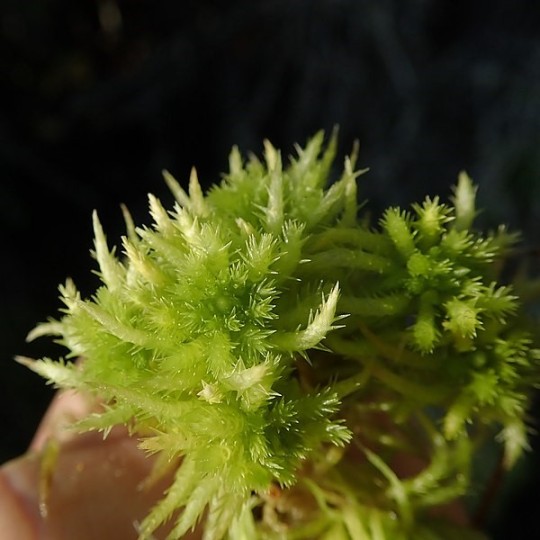
#tournament#now kill#i hope this is the right moss this time T-T#f3#tornado#moss#sphagnum moss#sphagnum#bog#peat bog#smack barm peat wet
405 notes
·
View notes
Text

Sphagnum moss (Sphagnum sp.) in Chattahoochee National Forest, GA, USA
by Alan Cressler
71 notes
·
View notes
Photo
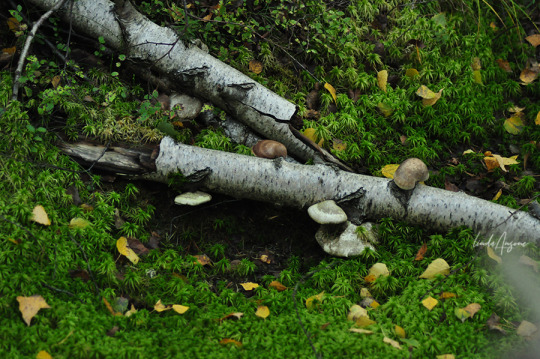


#woods#bog#moss#sphagnum#mushrooms#fungi#polypore#hoof fungus#birch polypore#nature#nature photography#original photographers#photographers on tumblr#birch tree
317 notes
·
View notes
Text
Time for our non-vascular plant friends to get some love!
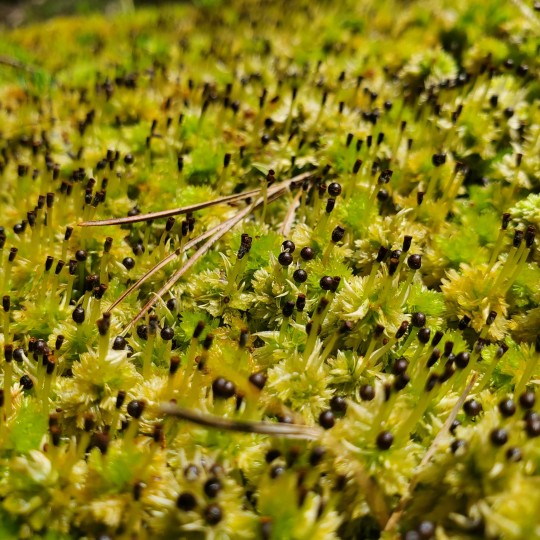
Today's plant is: some kind of Sphagnum!
Sphagnum is the primary contributor to peat deposits in bogs and fens worldwide. These wetlands have made a name for themselves in the last few years as both a quirky internet thing and as globally significant carbon sinks.
While sphagnum is known for being in bogs and fens, species of it grow in all kinds of habitats, provided there's a regular source of moisture. Case in point: I found these funky lil guys on a granite shelf on the side of a mountain in full sun!
You can tell this is sphagnum because of the spherical spore capsules and pyramid-shaped and tightly clustered capitulescence (fancy botany word for the top of the moss). I think they look a little bit star-shaped. These specimens were mid-spore release. All the brown dooblies on little green bracts are the spore carrying gametophytes.
Extra fun facts:
Sphagnum are really cool because they have something called "explosive dehiscence", which means their little spore capsules propel the spores by literally exploding open. I could actually hear them going off in the sun!
Sphagnum can hold 16 to 26 times their dry weight in water because of a matrix of large, empty, "dead" cells called hyaline cells. These cells have a pore that allows them to efficiently take on water — like little water jugs!
*I don't have a species ID for this because I was a) on national park property and don't have a permit to collect bryophytes and b) I frankly wouldn't have collected regardless because sphagnum ID is so! hard! And while I'm glad I know how to do it if need be, I don't do it recreationally--my hands are too shaky for microscopy and the keys are insane.
79 notes
·
View notes
Text
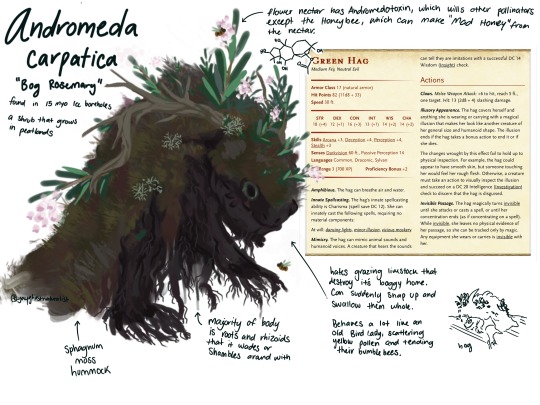
Reskinning creachers for my dnd character Cyphe to summon. She’s a necromancer for plants Paleobotanist! I’ve redone her spells with some botany flavor except the conjure/summon ones.
My methods: buy manual on trees and shrubs w 10,000 species. Read through all the A’s. Pick some cool ones, turn ecology into character notes. I need to mod these a bit with my dm.
#dnd art#botany#bog rosemary#dnd creature#dnd plant creature#botanical reskin#sphagnum#peat#hummocks#dnd#art#artists on tumblr#andromeda carpatica#paleobotany#concept sketch#concept art#creature#creature design#plant creature#hag#dnd hag
82 notes
·
View notes
Text

sphagnum moss
#moss#sphagnum moss#forest#spruce#environment#nature#photography#north#trees#naturist#wetlands#wetland#wetland ecology#sphagnum#conservation#birch#birch trees#camping#outdoors
113 notes
·
View notes
Text

40 notes
·
View notes
Text
This is for science; I want to know how many people know what moss is!
Please reblog when you vote and indicate your reasoning in the tags or comments! I'm trying to see what a good avenue for outreach would be.
#moss#bryophytes#botany#plants#lichens#fern allies#lycophytes#peat moss#sphagnum#listen I love moss and I love science communication and I'm sad that an awesome bryologist died recently#so I've decided to make an infographic about moss#but I need to know what is good and useful to put on it#rip Nancy Guttmann Slack#coolest old lady of all time#mine
53 notes
·
View notes
Text

Polytricum Moss (Polytrichum spp.) growing through a bed of red Sphagnum Moss (Sphagnum spp.) in blanket bog
Photo by Alex Hyde
#polytricum moss#polytrichum#moss#sphagnum#sphagnum moss#bog#bog moss#red#red moss#red plants#plants#botanical#plant photography#nature
7 notes
·
View notes
Text

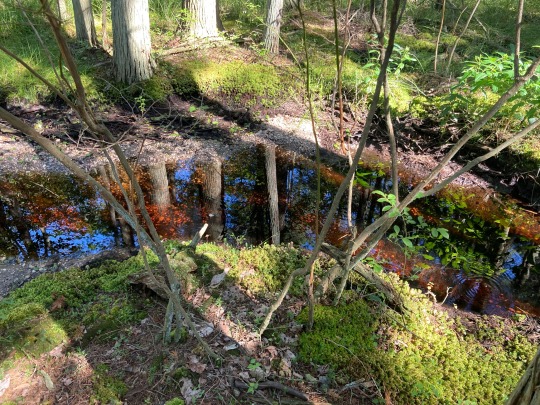
Beavers blocked this stream so the stagnant water became dark with tannins
90 notes
·
View notes
Text
ROUND 5: SPHAGNUM MOSS (greem) VS BUGS (bunny)


244 notes
·
View notes
Text
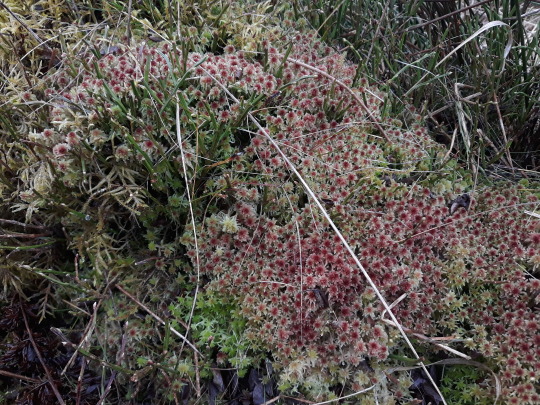
sphagnum moss
23 notes
·
View notes
Photo


#nature#nature photography#forest photography#sphagnum#mushrooms#fungi#moss#original photographers#photographers on tumblr#forest floor#forestcore
283 notes
·
View notes
Text

Cursed Moss Fact #001
Peat bogs in Finland regenerate as slowly as 10cm (about 4 inches) PER THOUSAND years. So when ‘mining’ peat, regeneration is discussed on a geologic time scale. Sphagnum (aka “peat moss”) is a genus of moss that occupies 1/3 of all land (or about 3% of the total earths surface). Note, some peat has no Sphagnum, or is made of other mosses and detritus.
One peat bog in the Catskills is between 14,700 and 15,100 years old (source).
The peachy-yellow and pink moss in the photograph is Sphagnum growing in a mini-bog in a greenhouse. Read more about mosses in Bryophyte Ecology by Janice Glime (link on pinned post on our main page)
#mosscore#cursed moss facts#moss fact#moss#sphagnum#bog#peat bog#botany#bryology#plant facts#botany facts#moss facts#science
29 notes
·
View notes
Text

#Drosera rotundifolia#sundew#plantphotography#plantlover#plant flowers#plant photography#plant#plantblr#plantlife#fluffy moss#mossyforest#mossy woods#green moss#sphagnum moss#Sphagnum#bog moss#green energy#beautiful#beautiful photos#my photo#photography#photooftheday#naturecore#photoart#forest#woods#forest view#walking in nature#nature#goblincore
38 notes
·
View notes
